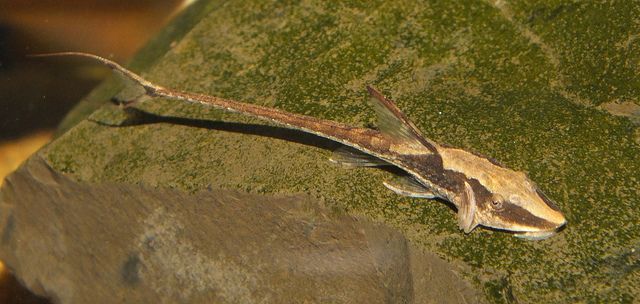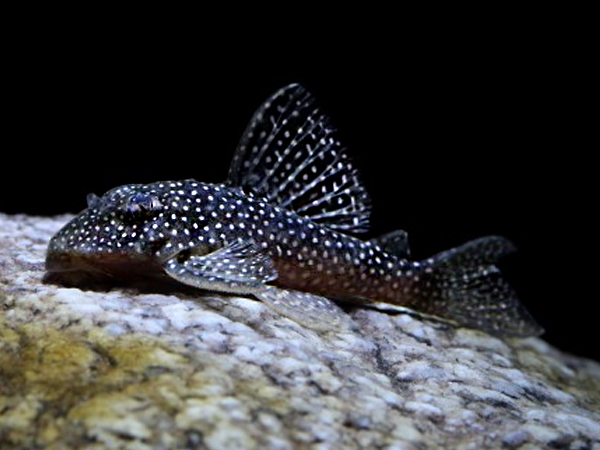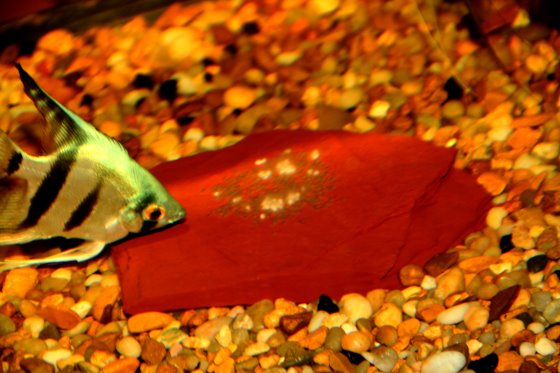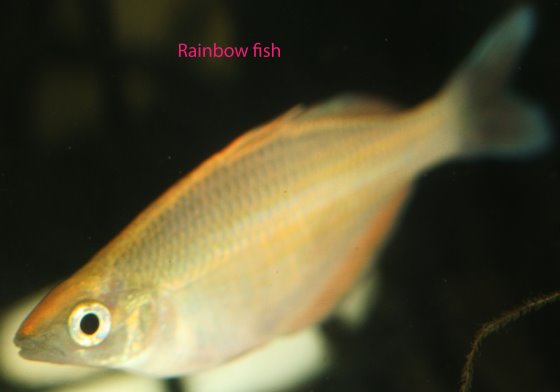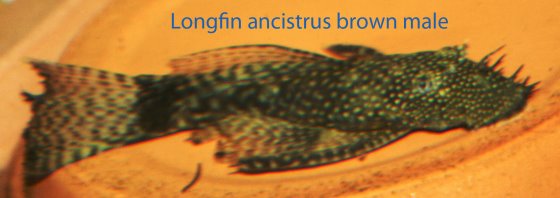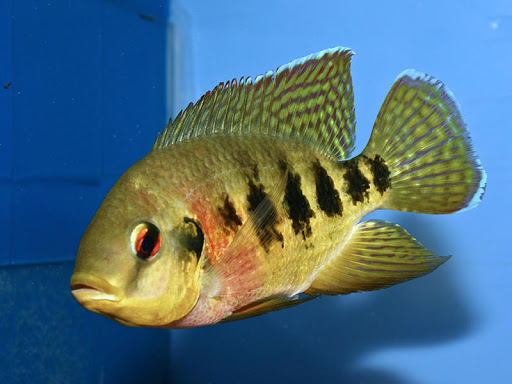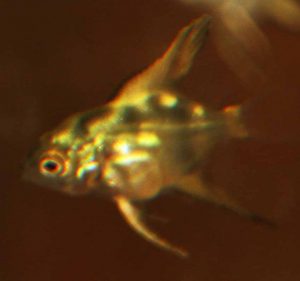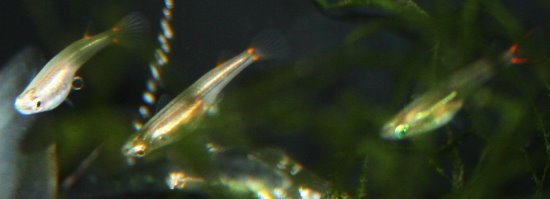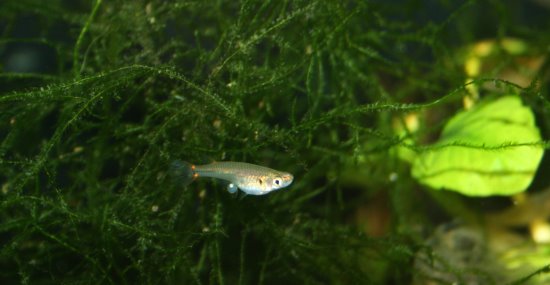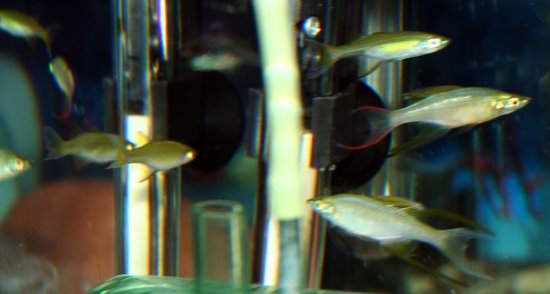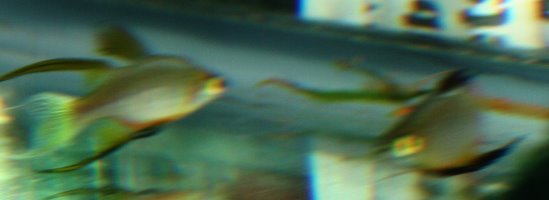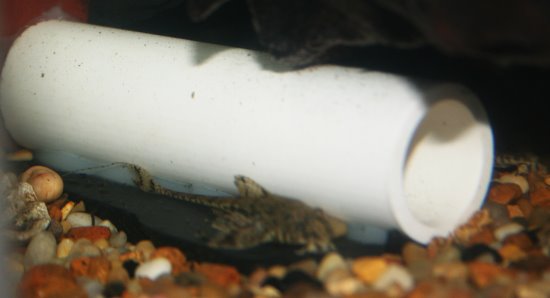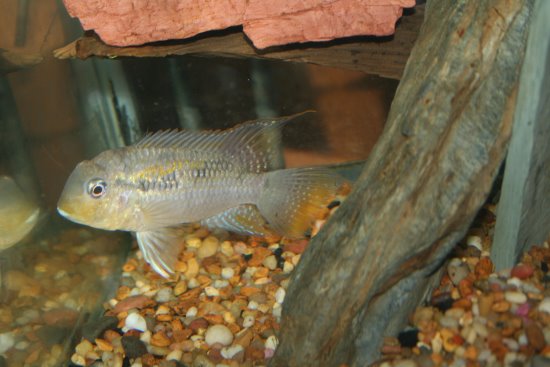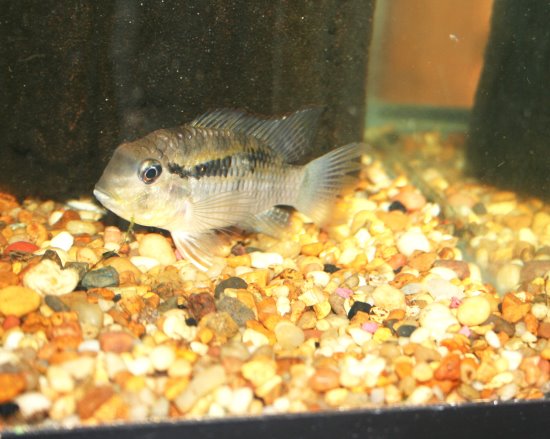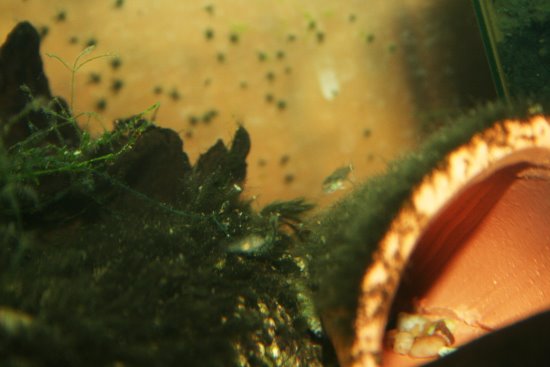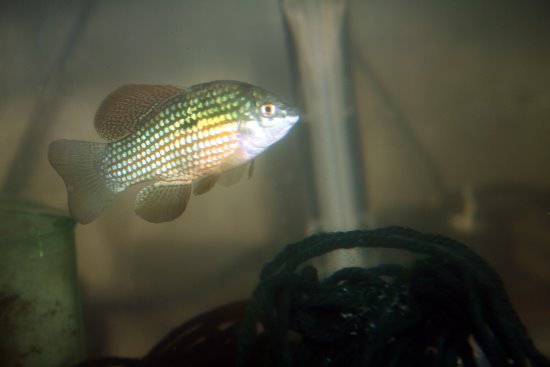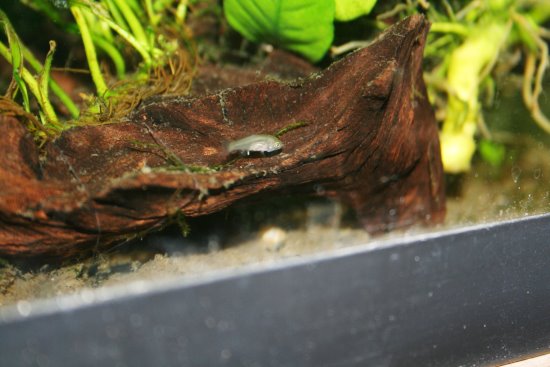How long will my fish live?
This a question often asked in the postbag of Practical Fishkeeping magazine. Having seen lots of aged fish on my travels, I wanted to find out the length of time some our aquarium veterans are surviving, and my findings are amazing!

Unfortunately, although some fish die every year through disease, or mistakes, the ones that are being cared for properly are going on to reach a truly ripe old age, and that doesn’t always seem to be related to species size.
Species selection
I think that as well as researching fish size and water requirements, we should also consider the length of time for which they will live. Life is short when you are an avid fishkeeper, as there are so many species to keep and so little time to keep them.
To find out how long a broad selection of aquarium species are living I posted a blog asking readers, to share their experiences.
What I found
My investigations led me to discover that many community species of fish are capable of outliving a cat or a dog, so making themselves a long-term commitment for the fishkeeper.
Take the Clown loach for example. I found ages up to 24 years reported, and, considering that in that time they can and will reach 30cm/12” in length and are a social species requiring the company of their own kind, the number of enthusiasts who can truly offer them what they need, compared with the number of people who purchase them, is very low indeed.
Twenty five years is a large chunk of anyone’s life and who can predict what they will be doing and where they will be living for the next quarter of a century?
It seems it’s not always the small species that have the shortest life spans.

Most tetras, rasboras and small barbs can hit five years old, as you might expect, but my investigations showed that some were swimming through to seven, eight and even 10 ten years of age. An Emperor tetra was listed at nine years old and a Neon tetra at 10!
I’ve listed two fish in the table at the end of this feature with big questions marks around them — a nine-year-old guppy and a 12-year-old White Cloud Mountain minnow. If those two cases are true then these small ‘‘short lived’’ fish species are outliving species like rainbowfish and some cichlids, both of which are normally noted for their longevity. The average life span for a guppy, apart from that one, was a much more average 18 months.
Golden oldies
Whether this is good or a bad I have yet to decide, but some families, genus and species stood out as being long lived. I’ve already mentioned the 24-year-old Clown loach, but even smaller loach species seem particularly aged. A 15-year- old Dwarf chain loach has been recorded along with a 17-year-old Kuhli loach.
Then there are the catfish. I would go so far as to say that some catfish are known for being long lived, Synodontis in particular, and a Synodontis schall, a large syno, is listed at 38 years old. But even smaller synos are hitting the 20 years of age mark and beyond. I found a S.nigrita at 19, a S. flavitaeniatus at 20 and the small, true upside down catfish, S. nigriventris, at 21 years of age.
Other small catfish species continued to surprise me, with Corydoras really opening my eyes. The list includes a Bronze corydoras at 11 years old, no surprise there perhaps, but what about a Corydoras zygatus at 21?
Lots of ‘common plecs’ and ‘gibbiceps’ plecs were registering at the 27, 28 year mark, so that is another good reason why you should think long and hard about introducing one as a solution to controlling a short-term algae problem.

Marines were featuring too, even common community species. Mr A B Hussey said: “I have been a fishkeeper for 35 years. Started keeping marines in 1992 and have a Regal tang, pair of Clowns and a Humbug, which were my among my first fish purchased.” Well done Mr Hussey, I say.
Extra care
The fact that some specimens are living so long must be a combination of genetics and extra care taken by the fishkeeper. No fish will last very long in poor water conditions, if fed a diet that is poor in nutrients, or if kept in a stressful situation. You, the fishkeeper, are responsible for all three of the above and should always put the welfare of the fish first.
I dropped fish health expert, Dr Peter Burgess, a line to ask if he knew of any age-related illnesses in fish and anything to look out for.
It seems that old fish are at greater risk of certain diseases and are also less able to withstand unsuitable water conditions or bullying. Spinal deformities can occur in old fish just as they do in humans. And fungus and eye infections increase in older specimens due to less efficient immune systems. Cell mutation is more likely in old fish, resulting in melanomas, as will organ failure, particularly kidney failure.

A tall story?
Koi are well known for being long-lived. However, there is one age reference about which I am more than a little sceptical. If it is true and can be scientifically proven then great, but even if it cannot be validated it still makes a great story.
It involves a Japanese Koi carp called Hanako that reportedly lived 226 years. Hanako was owned by Dr, Komei Koshihara and lived in a pond in Gifu, Japan, with five other geriatric Koi. In 1966, Dr. Koshihara made a radio broadcast about his favourite fish and the following is taken from the English transcript, which I found on www.vcnet.com
“This Hanako is still in perfect condition and swimming about majestically in a quiet ravine descending Mount Ontake in a short distance. She weighs 7.5 kilograms and is 70 centimetres in length. She and I are dearest friends. When I call her saying “Hanako! Hanako!” from the brink of the pond, she unhesitatingly comes swimming to my feet. If I lightly pat her on the head, she looks quite delighted.
“Sometimes I go so far as to take her out of the water and embrace her. At one time a person watching asked me whether I was performing a trick with the carp. Although a fish, she seems to feel that she is dearly loved and it appears that there is some communication of feeling between us. At present my greatest pleasure is to go to my native place two or three times a month and keep company with Hanako.
“I am often asked how it is that I can tell the age of a fish. As a tree trunk has its annual rings, so a fish has its annual rings on its scales, and we only have to count them to know the age of a fish. As a matter of course, we ourselves cannot do it. It requires the aid of a specialist and the use of a light microscope.
“Now, what was it that made me think of ascertaining the carp’s age? My grandmother on maternal side, who left this world at the advanced age of 93 some eight years ago, is said to have been told by her mother-in-law: “When I was married into this family, my mother in-law said to me, ‘that carp has been handed down to us from olden times; you must take good care of it’.
“When I was told this story, I became very curious to know how long the carp had lived. I found out Hanako’s age by the beforementioned method, but you may easily imagine how greatly I was grieved when I was forced to take a scale off her beautiful body. I caught her in a net very cautiously and repeatedly said: ‘Excuse me!’
“I took off two scales from different parts of her body by using a strong tweezers. The scales were examined by Professor Masayoshi Hiro, D.Sc., Laboratory of Domestic Science, Nagoya Women’s College.
“It took two months for him to acquire a satisfactory result. Using the light microscope, he photographed every part of the scales. It seems he took a great deal of trouble. When it was certain beyond doubt that the carp was 215 years old, the two of us exchanged a look of delightful surprise.
Then I had the professor examine the remaining five carp in the same pond, three white and two black ones. The examination took one year, and it was found out that three were respectively 168, 153 and 149 years old, and the remaining two were both 139 years old.
“Those results led us to be convinced that not only are the carp rare ones but they are a very precious existence from the scientific point of view as well. We must consider, then, in what surroundings and under what conditions these long-lived carp are placed. The pond is located far deep among the mountains of Mino Province. The locality is called Oppara, Higashi-Shirakawa Village, Kamo County, and is about the same distance from Gero Hot Springs on the Takayama Line as from Nakatsugawa City on the Central Line, both lines belonging to the National Railways.
“Nearby there are rustic hot springs called Oppara-onsen. Facing south toward the Pacific on the top of Mount Ontake, you will look down upon the locality at the foot of the mountain. Through the locality runs the Shirakawa, a tributary of the River Hida, which again is the upper reaches of the River Kiso.
“A stream of limpid water never ceases to flow all the year round. It is this water that flows into the pond which Hanako lives and which was carefully constructed with stones in former days. Besides that, pure water trickled from the foot of the mountain streams close by into the pond, making the favourable conditions still more favourable. The pond cannot be called large, only being about five metres square.”
Hanako died in 1977 at the age of 226.
The world’s oldest animal
The current record holder for longevity is a 400-year-old clam found in waters off Iceland’s north coast. The species, Arctica islandica, can be aged by measuring the growth rings around its shell.

Longevity rules OK!
Below is a list of fish and their age as claimed by their owners.
Three years
Three lined pencilfish, Nannostomus trifasciatus
Five years
Red eye tetra, Moenkhausia sanctaefilomenae
Buenos Aires tetra, Hyphessobrycon anisitsi
Black phantom tetra, Hyphessobrycon megalopterus
Cherry barb, Puntius titteya
Swordtail, Xiphophorus hellerii
Sailfin molly, Poecilia velifera/latipinna
African red eye tetra, Arnoldichthys spilopterus
Six years
X ray tetra, Pristella maxillaris
Festive cichlid, Mesonauta festivus
Uaru, Uaru amphiacanthoides
Gold sucking loach, Gyrinocheilus aymonieri
Tiger barb, Puntius tetrazona
Cardinal tetra, Paracheirodon axelrodi
Harlequin, Trigonostigma heteromorpha
Angelfish, Pterophyllum scalare
Seven years
Golden barb, Puntius sachsi
Eight years
Silver shark, Balantiocheilus melanopterus
Pearl gourami, Trichopterus leeri
Scissortail, Rasbora trilineana
Snakeskin gourami, Trichogaster pectoralis
Nine years
Angelicus catfish, Synodontis angelicus
Guppy, Poecilia reticulata ?
Giant danio, Devario aequipinnatus
Emperor tetra, Nematobrycon palmeri
10 years
Neon tetra, Paracheirodon innesi
Wild discus, Symphysodon spp.
Black widow, Gymnocorymbus ternetzi
Silver dollar, Metynnis argenteus
Armatus eel, Mystus armatus
Hoplo cat, Megalechis thoracata
Congo tetra, Micralestes interruptus
Blue dolphin cichlid, Cyrtocara moorii
Julie cichlid, Julidochromis marlieri
Boesemani rainbow, Melanotaenia boesemani
11 years
Clown plec, Panaque maccus
Bronze corydoras, Corydoras aeneus
12 years
White Cloud, Tanichthys albonubes ?
Firemouth, Thorichthys meeki
Kissing gourami, Helostoma temminckii
13 years
Red finned shark, Epalzeorhynchus frenatus
Jack Dempsey, Rocio octofasciata
14 years
Tank bred Discus, Symphysodon spp.
15 years
Clown barb, Puntius everetti
Regal tang, Paracanthurus hepatus
Humbug damsel, Dascyllus melanurus
L46, Hypancistrus zebra
Yellow tail blue damsel, Chrysiptera parasema
Pygmy chain loach, Yasuhikotakia sidthimunki
16 years
Striped dora, Platydoras costatus
Spotted dora, Agamyxis pectinifrons
Black ghost knifefish, Apteronotus albifrons
17 years
Kuhli loach, Pangio kuhlii
18 years
Corydoras, Corydoras metae
19 years
Red tailed black shark, Epalzeorhynchos bicolor
20 years
Frontosa, Cyphotilapia frontosa
Archerfish, Toxotes jaculatrix
Featherfin, Synodontis eupterus
Brochis, Brochis splendens
Rosy barb, Puntius conchonius
21 years
Upside down catfish, Synodontis nigriventris
24 years
Clown loach, Chromobotia macracanthus
25 years
Bristlenose catfish, Ancistrus spp.
27 years
Red tailed catfish, Phractocephalus hemioliopterus
28 years
Common plec, Liposarcus pardalis
30 years
Ornatipinnis, Polypterus ornatipinnis
31 years
Pacu, Colossoma macropomum
37 years
African lungfish, Protopterus annectens
43 years
Goldfish, Carassius auratus
73 years
Australian lungfish, Neoceratodus forsteri
80 years (226 years)
Koi, Cyprinus carpio
Reprinted with permission from
http://www.practicalfishkeeping.co.uk/content.php?sid=3664

